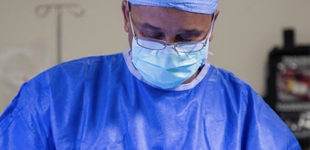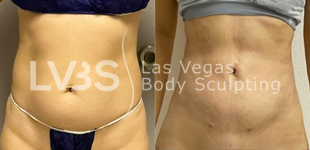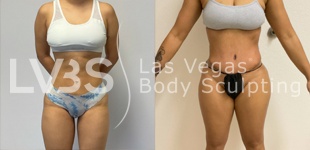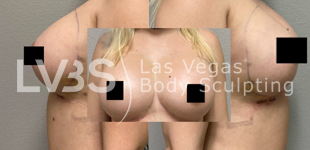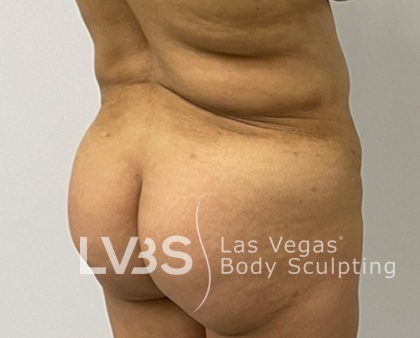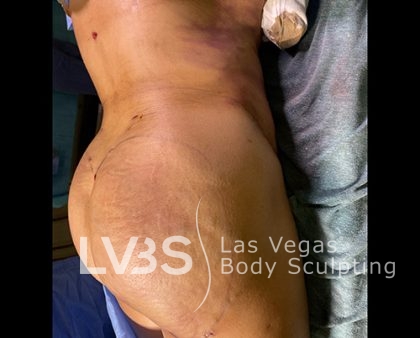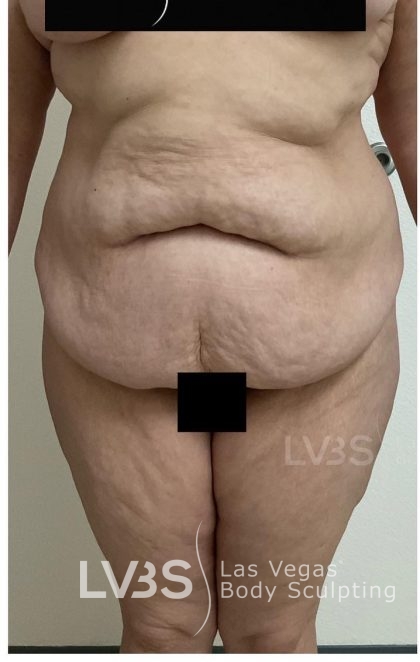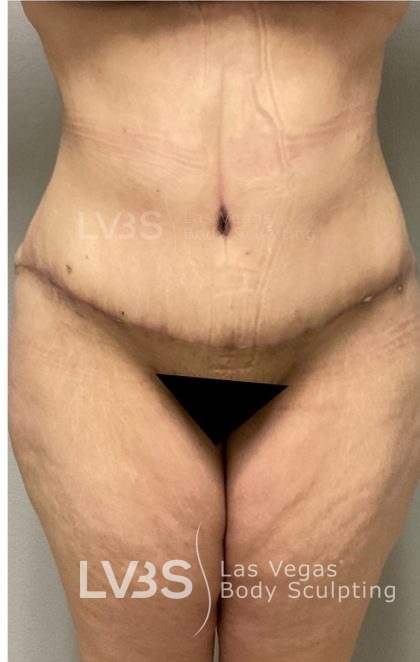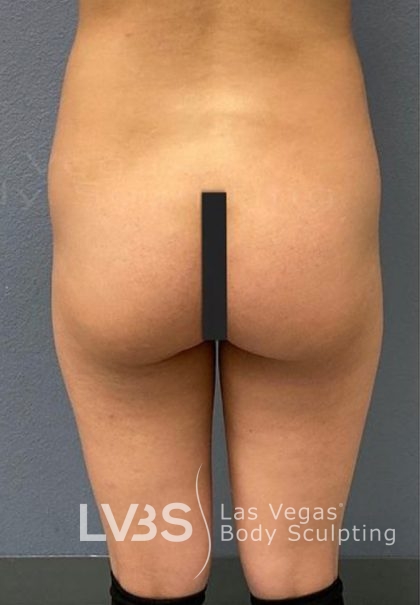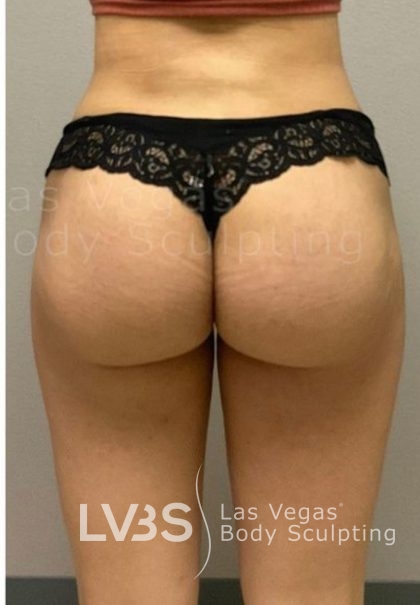Stem Cells with Fat Transfer
Conveniently located to serve the areas of Las Vegas and Henderson, NV

Fat transfer enhances the volume and shape of targeted areas of the body and face by using a patient’s own natural fat. Apart from its aesthetic benefits, this treatment can provide restorative stem cell benefits. Combining the regenerative potential of stem cells with the versatility of fat transfer, this procedure offers a minimally invasive and potentially effective solution for a wide range of patients seeking both cosmetic and regenerative benefits.
Dr. Mustafa Ahmed offers a safe and effective solution for individuals seeking fat transfer in Las Vegas. His innovative fat transfer techniques at Las Vegas Body Sculpting utilize the power of adipose-derived stem cells to provide patients with long-lasting, natural-looking results. Dr. Ahmed can address various aesthetic concerns, including facial rejuvenation, breast augmentation, and buttock enhancement. Patients who undergo this procedure can expect to see an improvement in their overall appearance; additionally, the regenerative properties of stem cells may provide additional benefits, such as improved skin texture and increased collagen production. To schedule your consultation appointment with Dr. Ahmed, call (702) 447-1257 or complete our online form.
Catch up on the exciting procedures and treatments and the science behind them on Dr. Ahmed’s blog!
Contents
Before and After Photos
About Stem Cells with Fat Transfer
Fat transfer, also known as fat grafting or lipo-filling, is a surgical procedure in which fat is removed from one part of the body, such as the abdomen or thighs, and then injected into another area that requires volume. It is a widely used surgical technique for aesthetic and reconstructive purposes and is commonly used as a natural filler for facial rejuvenation, but it is also becoming increasingly popular for
- Contour restoration
- Volume augmentation
- Skin improvement
Fat transfer has gained attention for its potential regenerative properties in recent years. [1] This is because adipose tissue is a rich source of stem cells. These cells are undifferentiated, which means that they haven’t become a certain kind of cell yet. Once they are introduced to an area, they can become exactly the new, healthy type of cell needed to repair damaged tissue. Adipose-derived stem cells (ADSCs) are often preferred over other sources of stem cells because fat is abundant and can be easily harvested through a minimally invasive liposuction procedure. ADSCs have shown promising results in various regenerative medicine applications, including tissue engineering, wound healing, and treating musculoskeletal disorders.
Stem cells can benefit the areas where fat transfer is used. Here are some ways in which stem cells can help in these areas:
Facial Rejuvenation
Stem cells can be used with fat transfer to provide natural-looking and long-lasting results in facial rejuvenation. The ADSCs from the harvested fat have regenerative properties that can:
- Improve skin texture
- Reduce fine lines and wrinkles
- Restore facial volume
The stem cells also promote the growth of new blood vessels, improving blood flow and oxygen supply to the skin.
Contour Restoration
Stem cells can help create new fat cells to restore lost volume and contour in the
- Breasts
- Buttocks
- Hands
- & more
The ADSCs from the harvested fat can augment the targeted area’s volume and improve its shape and contour. Additionally, the stem cells’ regenerative properties can improve the skin’s quality and reduce the appearance of scars. [2][3]
Tissue Regeneration
Stem cells have shown potential in tissue regeneration, including
- Treating wounds
- Burns
- Soft tissue injuries
The ADSCs from the harvested fat can stimulate new tissue growth, reduce inflammation, and promote healing. The stem cells can also differentiate into various cell types, such as bone, cartilage, and muscle, making them useful in repairing damaged tissues. [4]
What Are Stem Cells?
Stem cells are like a swift and efficient emergency response team that the body keeps on standby to combat tissue damage. Adipose-derived stem cells can influence tissue repair by either releasing signaling factors through cell-free extracellular vesicles (EVs, exosomes) or by supporting vital immune and inflammatory processes. ADSCs can also develop into mature adipose cells, providing the necessary components for tissue engineering. [1]
Benefits
There are several benefits to choosing stem cells with fat transfer:
- Using stem cells enhances the longevity of the transferred fat, resulting in a more permanent outcome. [5]
- Because the procedure uses your fat, the results are natural-looking and tailored to your needs.
- The liposuction procedure used to harvest the fat is minimally invasive, making it a safe and effective option for patients.
- Fat-transfected stem cells can address various aesthetic concerns in different body areas.
Adipose-derived stem cells have been shown to stimulate collagen production in various studies. [6] Collagen is an essential component of the extracellular matrix, which provides structural support to tissues in the body. As we age, collagen production decreases, leading to wrinkles, sagging skin, and volume loss.
ADSCs can differentiate into various cell types, including fibroblasts, responsible for producing collagen. In addition, ADSCs can release growth factors and other signaling molecules that can stimulate fibroblasts to produce more collagen.
Ideal Candidates
Determining the ideal candidate for stem cells with fat transfer depends on several factors specific to the procedure and the treatment area. Generally, individuals with good overall health and adequate fat deposits for harvesting are good candidates for this procedure.
Patients with realistic expectations about the procedure’s outcomes are also considered ideal candidates. For instance, a patient seeking facial rejuvenation using fat transfer should have enough facial volume loss to be treated effectively and minimal skin laxity.
A personalized evaluation and consultation with Dr. Ahmed are necessary to determine the ideal candidate for stem cells with fat transfer. Schedule yours today by calling (702) 447-1257 or filling out this form.
Personal Consultation
The consultation for fat transfer involves a comprehensive evaluation of the patient’s overall health, medical history, and suitability for the procedure. Dr. Ahmed will also examine the area to be treated and discuss the patient’s goals and expectations.
During the consultation, Dr. Ahmed will explain the procedure and provide information about the risks and benefits involved. He will also discuss any alternative and complementary treatments that may be available. The consultation allows the patient to ask questions and address any concerns. The patient must provide complete, honest information about their medical history and current medications to ensure the best possible outcomes.
Preparation
After the consultation, there are several steps a patient can take to best prepare for the fat transfer procedure. Dr. Ahmed will provide specific instructions based on the patient’s individual needs and medical history, but in general, patients may be advised to stop taking certain medications, supplements, or herbs that can increase the risk of bleeding or affect healing. Patients may also be instructed to avoid smoking, alcohol, and aspirin for some time before and after the procedure. Additionally, patients may be asked to arrange for someone to accompany them to and from the procedure and help with household tasks and child care during the recovery period. Following pre-operative instructions and preparing for post-operative care can help ensure a smooth and successful recovery.
Procedure
The procedure begins with Dr. Ahmed using a liposuction technique to remove fat from the donor site, typically under local anesthesia. The harvested fat is then processed to remove excess fluid and cellular debris before being injected into the targeted area using a small needle or cannula.
Fat transfer is a minimally invasive procedure that typically takes one to three hours, depending on the extent of the treated area. The procedure can be outpatient, meaning the patient can return home on the same day. Fat transfer results are generally long-lasting and natural-looking and can be further enhanced with subsequent treatments if desired.
Recovery
Recovery after fat transfer varies from person to person and depends on the extent of the procedure and the area of the body that was treated. Generally, patients can expect some swelling, bruising, and discomfort at the fat removal and injection site. Pain and anti-inflammatory medications may be prescribed to help manage discomfort and reduce swelling.
The patient may also be advised to avoid strenuous activity or exercise for several weeks after the procedure to allow for proper healing. Most patients can return to work and normal daily activities within a week to 10 days after the procedure, but it is important to follow the surgeon’s specific post-operative instructions to ensure optimal healing and recovery.
Results
The results of fat transfer can be transformative for patients, not only improving their physical appearance but also enhancing their confidence and self-esteem.
- In the face, fat transfer can restore volume to areas that have become hollow or sunken due to age or genetics, such as the cheeks, temples, and under-eye area. This can create a more youthful, refreshed, and rejuvenated appearance.
- In the breasts, fat transfer can be used for augmentation, reconstruction, or correction of asymmetry and can provide a natural-looking result without the need for implants.
- Fat transfer to the buttocks, also known as a Brazilian Butt Lift, can create a more curvaceous and lifted appearance.
- In the hands, fat transfer can rejuvenate the skin and restore volume, resulting in a more youthful appearance.
The benefits of fat transfer extend beyond aesthetics. In addition to adding volume and contouring, fat transfer can improve the texture and quality of the skin in the treated area.
Costs
While the cost of stem cells with fat transfer may require careful budgeting, it is important to consider the long-term benefits and potential improvements to the quality of life. Many patients report increased self-confidence and improved body image after undergoing the procedure. Choosing a qualified and experienced cosmetic surgeon who can help achieve the desired results while minimizing the risk of complications is essential – call (702) 447-1257 to meet with Dr. Ahmed!
References
- Shukla L, Yuan Y, Shayan R, Greening DW, Karnezis T. Fat Therapeutics: The Clinical Capacity of Adipose-Derived Stem Cells and Exosomes for Human Disease and Tissue Regeneration. Frontiers in Pharmacology. 2020;11. https://doi.org/10.3389/fphar.2020.00158
- Chen H, Hou K, Wu Y, Liu Z. Use of Adipose Stem Cells Against Hypertrophic Scarring or Keloid. Frontiers in Cell and Developmental Biology. 2022;9. https://doi.org/10.3389/fcell.2021.823694
- Rigotti G, Marchi A, Galiè M, et al. Clinical Treatment of Radiotherapy Tissue Damage by Lipoaspirate Transplant: A Healing Process Mediated by Adipose-Derived Adult Stem Cells. Reconstructive Surgery. 2007;119(5):1409-1422. https://doi.org/10.1097/01.prs.0000256047.47909.71
- Tapp H, Hanley EN, Patt JC, Gruber HE. Adipose-Derived Stem Cells: Characterization and Current Application in Orthopaedic Tissue Repair. Experimental Biology and Medicine. 2009;234(1):1-9. doi:10.3181/0805-MR-170
- Saffari, Tiam M.; Saffari, Sara; Vyas, Krishna S.; Mardini, Samir3; Shin, Alexander Y.. Role of adipose tissue grafting and adipose-derived stem cells in peripheral nerve surgery. Neural Regeneration Research 17(10):p 2179-2184, October 2022. | DOI: 10.4103/1673-5374.336870
- Kim JH, Jung M, Kim HS, Kim YM, Choi EH. Adipose-derived stem cells as a new therapeutic modality for ageing skin. Experimental Dermatology. 2011;20(5):383-387. https://doi.org/10.1111/j.1600-0625.2010.01221.x

